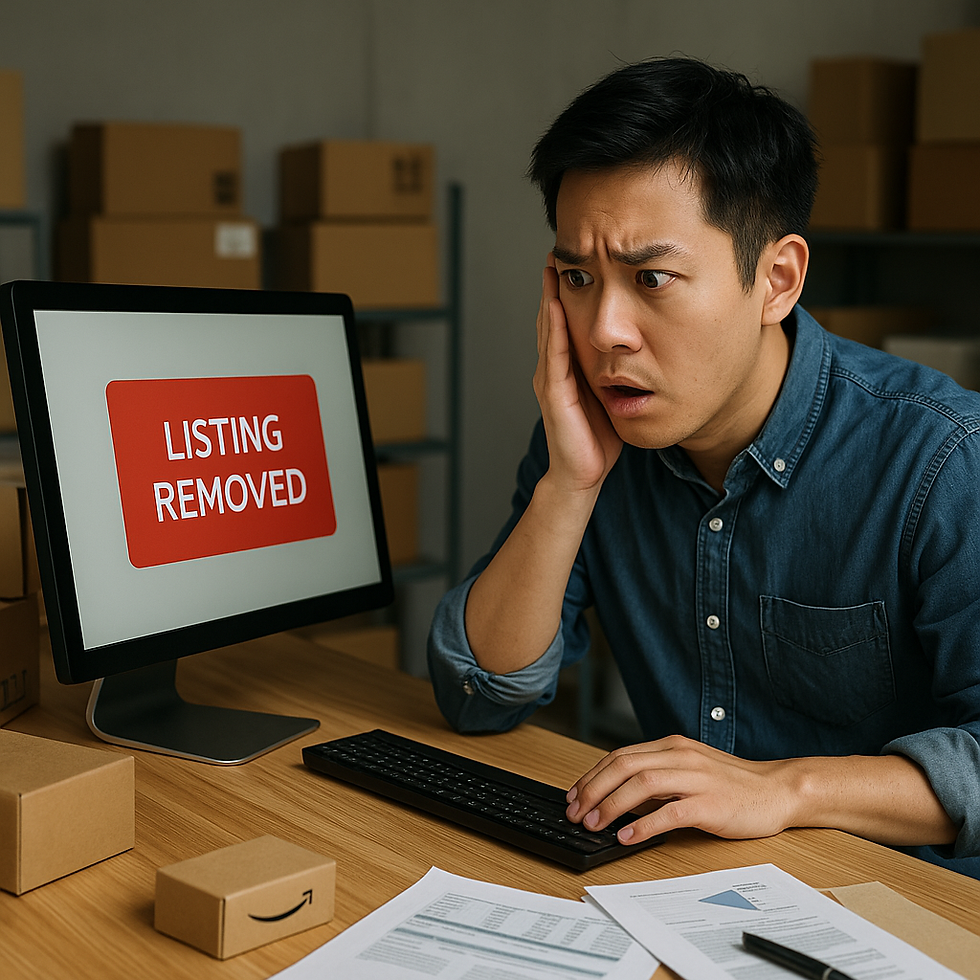Platform Rules ≠ The Law: Why Sellers Are Often Judged Unfairly
- Yi

- Aug 9
- 3 min read

“Why am I accused of infringement just for using an image?”
“Other sellers are offering the same product—why suspend only me?”
“Amazon says I violated its policy, but my lawyer says it’s not illegal. Who’s right?”
These are some of the most common frustrations Amazon sellers voice when facing account suspensions, product takedowns, or intellectual property complaints. At the heart of these questions lies a fundamental misunderstanding: treating platform rules as if they were the same as laws.
If you want to operate compliantly and respond effectively to complaints, you must first understand the difference—and the connection—between these two systems.
1. Platform Rules Are “Operating Standards”; Laws Are the “Baseline Rules”
Amazon’s platform rules are internal policies designed to regulate seller conduct, protect the customer experience, and maintain marketplace order. They are mandatory, but their reach is limited to Amazon’s ecosystem.
Laws, on the other hand, are enacted by governments through formal legislative processes. They establish the minimum legal standards for society at large. If you sell in the United States—or target U.S. consumers—you must comply with U.S. laws, regardless of any platform policy.
Put simply:
Breaking a platform rule can get your account suspended or your listing removed.
Breaking the law can get you sued, fined, or held liable for damages.
2. Platform Standards ≠ Legal Liability
In many areas, platform rules go far beyond what the law requires. For example:
Amazon may prohibit you from mentioning a competitor’s brand in a listing title, whereas under trademark law, fair comparative references might be permissible.
A single buyer complaint may trigger an immediate takedown on Amazon, while a court would require much stronger evidence to find you liable for infringement.
In other words, platform rules are designed to minimize business risk, while laws are designed to assign legal responsibility.
For instance, a copyright claim against an image you used does not automatically mean you’ve infringed. But Amazon can still remove the listing simply because a complaint exists—this is a commercial risk decision, not a legal judgment.
3. The Law Gives You “Counterattack Rights”; Platforms Usually Give You “Appeal Rights”
Within Amazon’s system, your options are usually limited to submitting explanations, authorization letters, or rights statements. If the complainant refuses to withdraw, Amazon often keeps the listing down.
In the legal system, you can go further—you can file a Declaratory Judgment action to have a court declare that you are not infringing, and even seek damages for wrongful complaints. The law offers a structured dispute resolution process; the platform offers a narrow, internal correction mechanism. Both operate in parallel, and you need to know how to use each to your advantage.
4. Why Compliance Teams and Legal Teams Often Disagree
Platform compliance teams understand Amazon’s internal policies and enforcement patterns. Their focus is on “Will the platform suspend you?”—not “Are you actually breaking the law?”
Lawyers, in contrast, assess matters under statutes, case law, and judicial standards. Their focus is on “Can you win a legal challenge?” and “Do you actually meet the legal definition of infringement?”
The perspectives are different, and so are the goals:
Compliance aims to prevent trouble.
Legal counsel aims to resolve trouble once it arises.
Conclusion
In cross-border e-commerce, platform rules determine your day-to-day survival, while laws determine your ultimate outcome. Sellers cannot afford to rely solely on platform notices or internal appeals. The key is to correctly identify whether you’re dealing with a platform issue or a legal issue—and then choose the right response strategy for each.



Comments